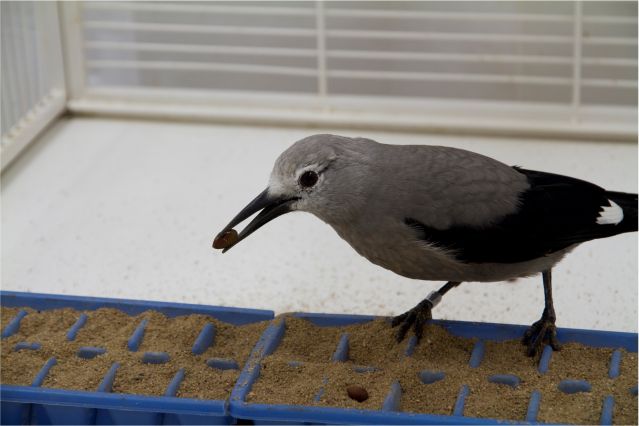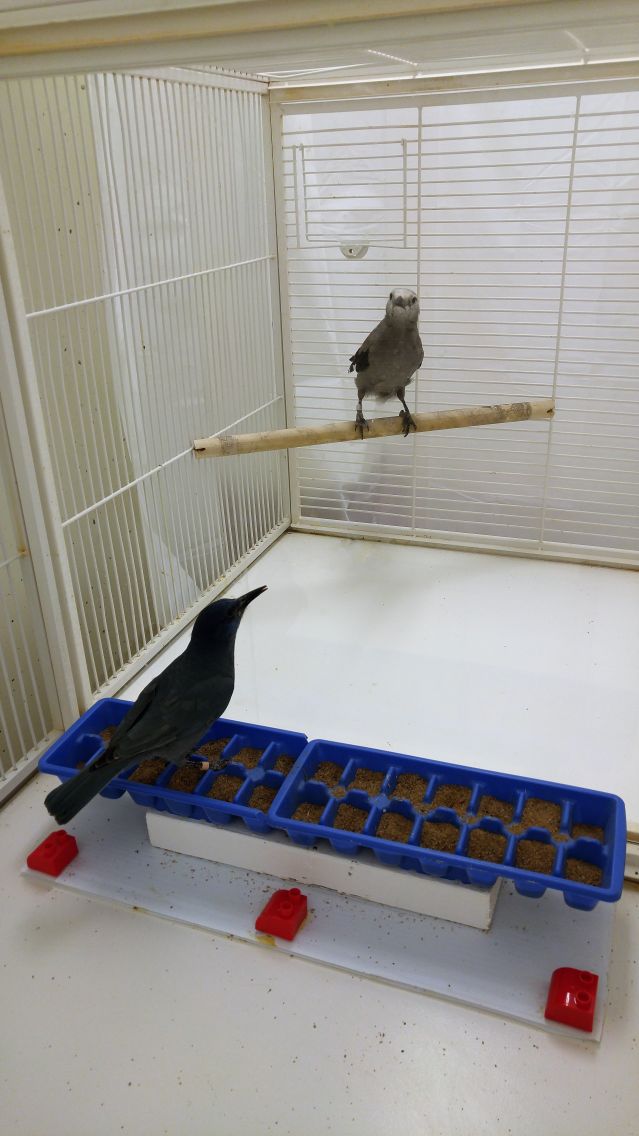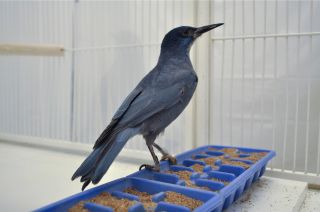Persuasion
Hiding Seeds? It Depends on Who’s Watching
Bird species’ social lives influence their food-storing behavior.
Posted May 15, 2023 Reviewed by Devon Frye
Key points
- Scientists compared caching behavior of social jays and solitary nutcrackers when alone and when watched.
- Both species re-hid more food when watched but they attended to different social cues of the observing bird.
- Differences in sociality explain jays’ preemptive and nutcrackers’ reactive approaches to cache protection.
- Both bird species can adjust their caching behavior using social information provided by observing birds.

Corvids (birds including jays, crows, and magpies) are known for their caching behavior: hiding food to retrieve and eat later. Some species hide thousands of seeds to survive the lean winter months.
Remembering the locations of all those caches involves impressive spatial memory skills, but it’s only half the challenge. The birds must also protect their caches from potential thieves—fellow birds who may be watching and waiting for an opportunity to pilfer another’s seeds.
“There are studies showing corvids protect their caches from other individuals of the same species, but these caches can be stolen by birds of other species, as well,” says Alizée Vernouillet, a behavioral ecologist at Ghent University. “That is what got me excited to study how different birds understand when and how to protect their food from being stolen.”

In a new study, Vernouillet and colleagues compared the cache protection behaviors of two corvid species, pinyon jays and Clark’s nutcrackers. The species share habitat in the southwestern U.S. and both rely heavily on thousands of cached pine seeds over the winter.
But the two species differ when it comes to their social structures. Pinyon jays are highly social, living in flocks of up to 400 individuals, while Clark’s nutcrackers are more solitary. Thus, pinyon jays are always surrounded by others when caching but nutcrackers rarely are. Vernouillet wondered how this difference in sociality might influence their caching behavior when being observed by a bird of their own kind or a different species.
Hide-and-Seek Strategies
The researchers tested jays and nutcrackers individually in a caching paradigm where the subject (the cacher) was given access to a bunch of pine seeds and two distinct ice cube trays with the wells filled with sand. One tray was in the back of the compartment and one tray was positioned near a clear divider. Depending on the condition, the compartment on the other side of the clear divider contained a bird of the same species, a bird of the other species, an inanimate object (a bird-sized water bottle), or nothing at all.

First, the cacher was given time to do whatever they wanted with the pine seeds, including hiding them in the two trays. After the time was up, and the cached seeds were counted, the researchers placed the tray closest to the divider into the observing compartment where seeds could be pilfered. Finally, after witnessing the pilfering, both trays were returned to the cacher, such that they could eat or move any seeds to new locations when alone.
Vernouillet and colleagues found that the two species used different strategies to protect their caches.
“The nutcrackers reduced the number of seeds they cached when in the presence of another nutcracker, but not when they were in the presence of a pinyon jay,” she says. “Whereas the pinyon jays hid more of the seeds in the protected tray versus the risky tray when they were in the presence of another individual, whichever species it was.”

For both species, the tendency to re-cache depended on social cues from the observing bird. Pinyon jays responded to the amount of time the observer spent close to the caching locations. Nutcrackers responded to the amount of time the observer spent pilfering their caches.
The researchers say the birds’ differing social lives may explain their disparate strategies. Pinyon jays are often surrounded by other birds, so they may re-hide their food proactively when another bird approaches their hiding spots. The less social Clark’s nutcrackers re-hide their food only after seeing another bird steal from them, a reactive response that makes sense for birds who typically have more opportunities for privacy when hiding food.
From the Lab to the Wild
Vernouillet says these findings inspire more questions about sociality and caching. For instance, which specific behaviors of the observing bird do caching birds attend to—their proximity to caching locations, gaze direction, or other cues?
Additionally, while the ice-cube tray paradigm used in this study allows for controlled manipulations, it spatially restricts the scale of where an individual can cache their seeds. In the wild, individual nutcrackers and jays can have thousands of caching sites ranging from hundreds to thousands of hectares. In this laboratory experiment, they were limited to two ice-cube trays that were 40 cm away from one another, and the observing bird could easily see both trays. Extending these findings to more natural settings and larger spatial scales could allow researchers to evaluate other cache protection behaviors previously reported in corvids, such as caching in locations out of view of observing birds.
“For me, it is already mind-blowing that these birds are able to remember the locations of tens of thousands of seeds in order to survive the winter,” says Vernouillet. “On top of that, there are these social subtleties that we might associate more with humans or primates than with birds.
“This knowledge adds to our appreciation of the birds around us and the social pressures that influence their behaviors.”
References
Vernouillet, A., Clary, D. & Kelly, D.M. Social information used to elicit cache protection differs between pinyon jays and Clark’s nutcrackers. Behav Ecol Sociobiol 77, 50 (2023). Doi: 10.007/s00265-023-03307-9.


